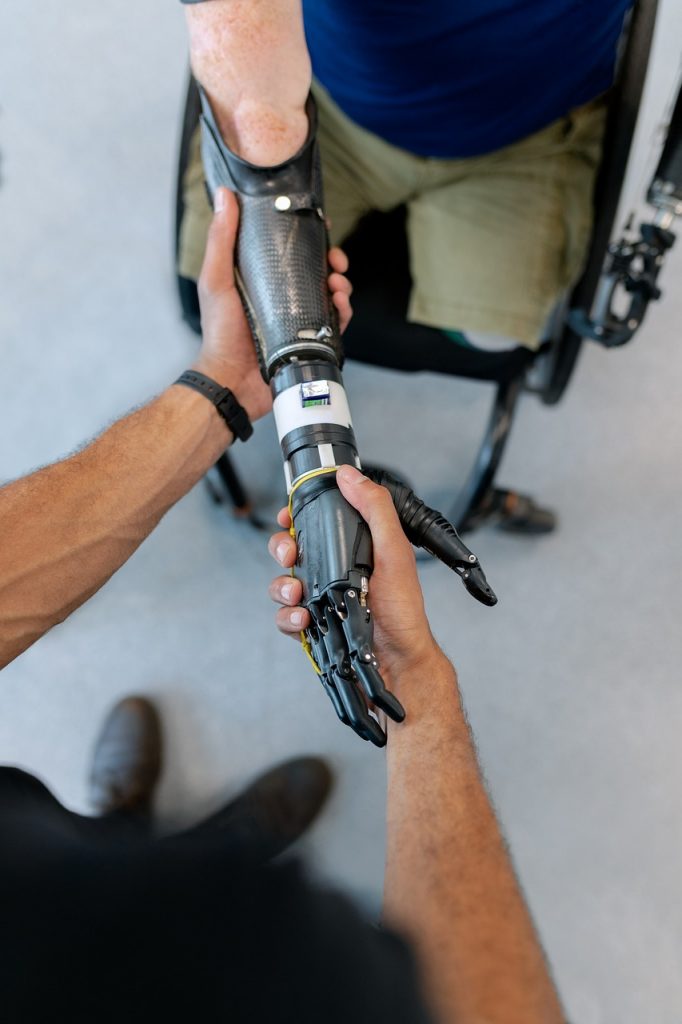Proprioception: Balance and Phantom Limbs
26 Targeted Sensory Re-Innervation
Learning Objectives
Be able to explain why sensory feedback is necessary to control an active prosthetic limb.
Be able to describe at least 1 method of providing sensory feedback.

Targeted sensory reinnervation is a method by which skin near or over the targeted muscle is denervated, then reinnervated with afferent fibers of the remaining hand nerves. This allows an amputee to better control their active prosthetic limb. Therefore, when this piece of skin is touched, it provides the amputee with a sense of the missing arm or hand being touched. While active prosthetic limbs are exciting, they are difficult to control without this sensory feedback. Without sensory feedback, an amputee will not be able to gage how much force to apply on an object. So, someone may be in for a much more aggressive handshake than they originally planned. Or an amputee may accidentally crush their can of Pepsi when they pick it up. An additional issue involving sensory feedback is detecting temperature. An amputee has no sense of burning heat or freezing cold without some form of sensory feedback. This can be quite dangerous if they pass the object to their other hand for example.
In providing the necessary sensory feedback by delivering temperature and force cues to adjacent tissue, targeted sensory reinnervation lets the brain learn to interpret the sensations as coming from the prosthetic arm. This approach takes advantage of the same mechanisms that let phantom limbs live in the brain. For example, while receiving an alcohol rub on his chest after the surgery, a patient described a sensation of being touched on the pinky. The explanation for this phenomenon is that, since his subcutaneous fat was removed during surgery, his chest skin was denervated. Thus, the afferent nerve fibers regenerated through the pectoral muscle, reinnervating the skin over the muscle. Since then, areas of the pectoral muscle have been mapped to parts of the arm and hand according to the patient’s description of touch sensations he felt.
With this discovery, a team of doctors set out to perform nerve transfer surgery specifically aimed to reinnervate sensory feedback. A piece of skin near or over the targeted muscle was denervated, thus the afferent nerve fibers were allowed to reinnervate the skin. This technique has been dubbed “transfer sensation”, and it has the potential of providing useful sensory feedback, such as pressure sensing, to help the patient judge the amount of force to be exerted.
Exercises
Cheryl Olman PSY 3031 Detailed Outline
Provided by: University of Minnesota
Download for free at http://vision.psych.umn.edu/users/caolman/courses/PSY3031/
License of original source: CC Attribution 4.0
Adapted by: Kori SkrypekWikipedia, Targeted Reinnervation
URL:https://en.wikipedia.org/wiki/Targeted_reinnervation#:~:text=Targeted%20sensory%20reinnervation%20is%20a,arm%20or%20hand%20being%20touched.
License: CC BY SA 3.0
Adapted by: Kori Skrypek
QUIZ by Marcus Gardner

